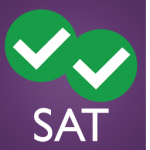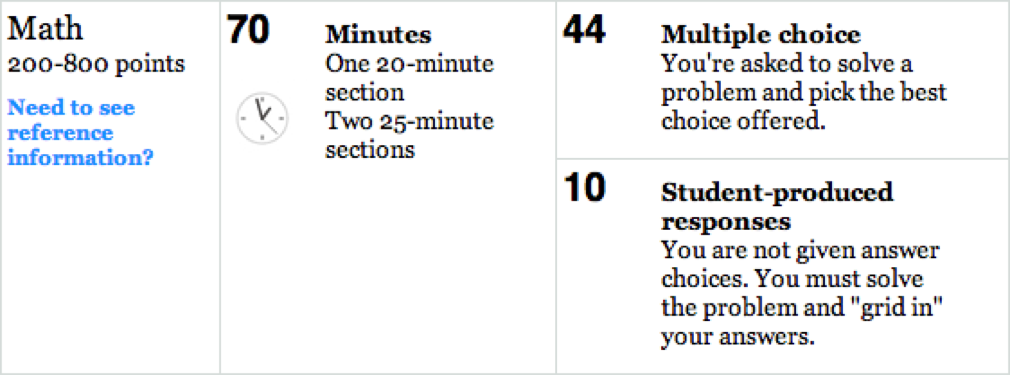 Sometimes it’s hard to see the beauty in the SAT, but trust me for a moment: The SAT is beautiful because it is standardized.
Sometimes it’s hard to see the beauty in the SAT, but trust me for a moment: The SAT is beautiful because it is standardized.
The College Board has strict limitations on what they can and can’t put on the test. I’m not just talking about algebra (on the test) or calculus (not on the test), although that is part of it. The SAT has to abide by the rules they establish for the type of grammar they can test, the way they can ask a question, the information they have to provide in each question, the types of wrong answers they are allowed to use, the graphs and pictures they make, the length of passages, the topic for essays…I’m just getting warmed up.
A major part of preparing for the test is knowing all the stuff that you can know. Not just predicting what might be on the test, but knowing for sure what things will be on the test and what will not be on the test. So let’s take a look at what we know will be on the test:
Questions
These tables came directly from the College Board website. We have the sections, score range, timing, question types, and number of questions:
Beyond what the College Board provides on their website, they also publish a test prep book—The Official SAT Study Guide. Not only does it provide more detail on the types of questions to expect in each section, but it also provides 10 practice tests, drills, examples, and lots and lots of example questions. This is the best resource out there for students since it’s published by The College Board, and as such, will have the best sample questions and analysis. With this book you won’t have to wonder how hard is the SAT—you’ll know.
Skills
The College Board provides us with a useful resource for looking at the skills needed to achieve a certain score in each section. Called the SAT Skill Insight, it breaks down each section into score ranges, like what skills you need to score in the 200 – 290 range or 700 – 800 range.
Not only do they tell us what skills they expect to see, but they also provide the SAT question types that demonstrate how these skills will be tested. So we have something tangible to hold onto. This is a whole lot of information that can be extremely helpful in predicting what will be on the test. So take the time to go through each of the sections, looking at the skills tested and the questions that test these skills.
Ultimately, the time you put into researching the skills on the test will help you to know where you will need to focus your studies and what to work on. You will have a better idea of what type of SAT study schedule to choose or create. You’ll actually be able to save yourself time by investing in this process.
Scoring
We know that for each correct multiple-choice question, the student receives one point. For every multiple-choice question missed, a quarter point is deducted from the student’s score. This means you have to miss four questions to eliminate one correct answer.
Questions in the math section that require a student to enter a response have no deduction for wrong answers.
Finally, the essay will be graded by two people and receive an aggregate score of 2 – 12.
Takeaway
We’ve only scratched the surface of all that can be known before test day. So your journey has just begun. No reason to feel helpless or lost, because there is so much that we can predict about the SAT, and so much that we can know before test day.
And that is why it’s so beautiful! It’s not a mystic test that we have to walk into blindly. We can walk into the test with a little swagger seeing the beauty in how predictable the test really is.
 Written by Kevin Rocci, resident SAT expert at Magoosh. For more advice on SAT prep, check out Magoosh’sSAT blog.
Written by Kevin Rocci, resident SAT expert at Magoosh. For more advice on SAT prep, check out Magoosh’sSAT blog.
> For more info on test prep, visit NextStepU.com!






